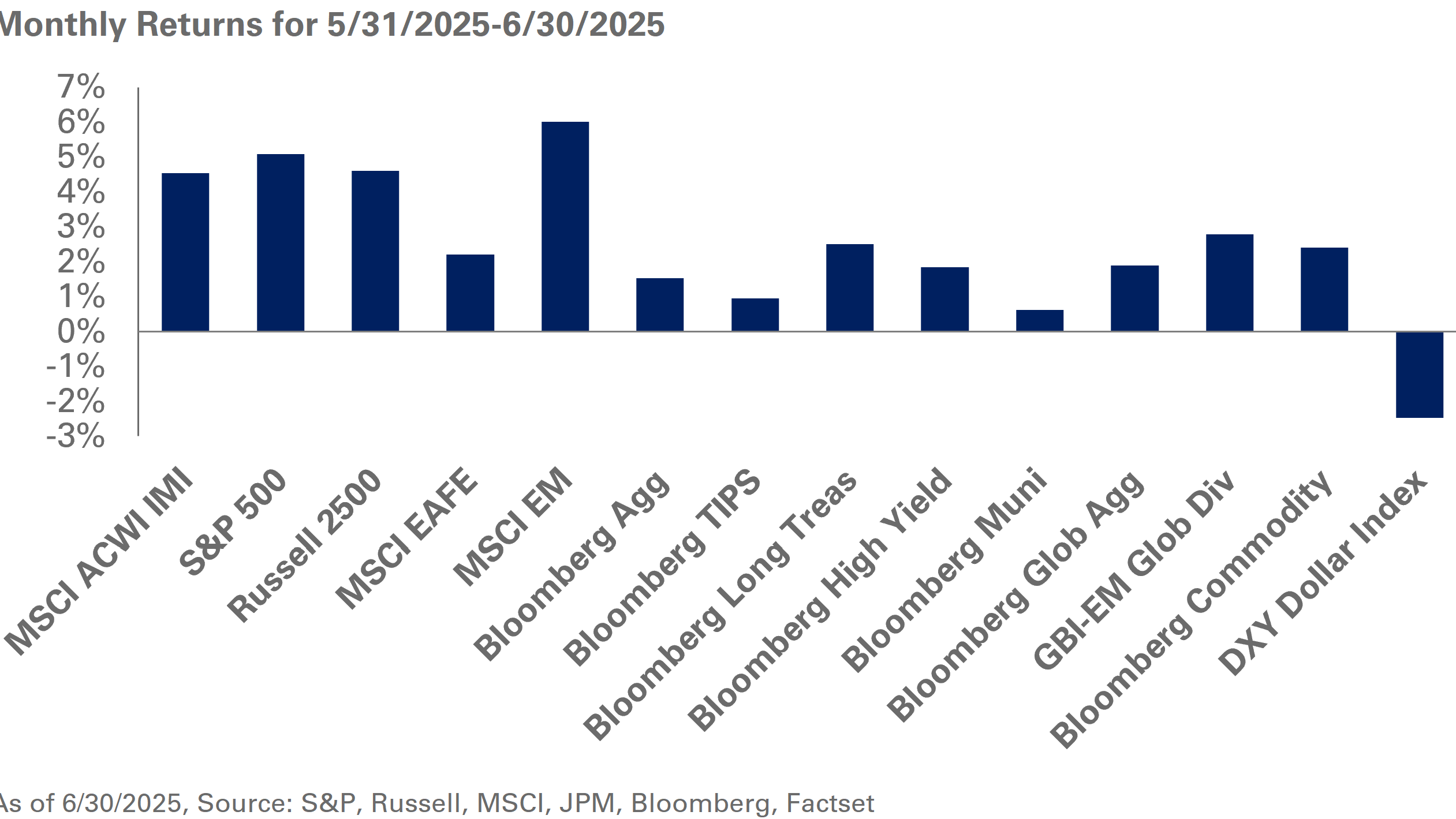Global Equities
The rout in equities spilled into the second quarter as heightened geopolitical tensions, high inflation and dramatic increases in interest rates ratcheted up concerns of a recession. Major indexes declined sharply with the S&P 500 Index down 16.1% while European stocks fared slightly better with the MSCI EAFE Index losing 14.5%; emerging markets led performance with losses of 11.4%, according to the MSCI EM Index.
In line with the previous quarter, value stocks bested growth equities and large-cap equities outperformed small-cap stocks. Within sectors, energy was the relative outperformer, while information technology and consumer discretionary lagged.
Meanwhile, global private equity fundraising totaled $187 billion in the three months ended June 30, according to data from Preqin. During this period, fundraising in the U.S. increased to $143 billion from $111 billion in the first quarter, fueled by a surge in fundraising by mega-funds across buyout and venture strategies. Fundraising outside North America fell sharply to $41 billion in the second quarter from $87 billion in the prior quarter.
Private equity deal activity—confirmed and estimated—totaled $234 billion in the second quarter, a 21% drop from the first quarter, according to PitchBook data; during this time, exit activity was relatively stable but significantly lower relative to 2021 levels. U.S. venture capital firms raised $122 billion in the first half of the year, already within striking distance of the $139 billion raised in 2021. However, deal value and the number of deals were down in the second quarter as investors anticipate a revaluation in the current environment.
Global Fixed Income
Volatility reigned in fixed-income markets in the second quarter, as headline CPI surged to 9.1%, hitting a 40-year high. In response, the Federal Reserve boosted the Fed Funds rate by 75 basis points in June—its largest move since 1994—while signaling a willingness to take a tough stance on inflation even at the expense of economic growth. Against this backdrop, the 10-year Treasury yield peaked at 3.47% on June 14—its highest reading since 2011—before ending the quarter at 3.02%. In addition, the yield curve flattened, with 10- and two-year spreads just above zero at the end of the second quarter.
Investment-grade corporate spreads widened 39 basis points in the three months ended June 30, while agency mortgage spreads widened 22 basis points. As a result, the Bloomberg Aggregate Bond Index declined 4.7% in the second quarter, bringing year-to-date losses to 10.3%, the weakest six-month start to a year since inception.
High-yield bonds also fared poorly amid widening credit spreads, down 9.8% in the second quarter, bringing year-to-date losses to 14.2% – a record low in performance for the first half of a year. Leveraged loans were in the red too, losing 5.3% in the second quarter.
Real Assets
Public real assets retreated significantly in the second quarter. Initially buoyed by robust equity markets and the supply shocks caused by the Russian war in Ukraine, commodity prices are now falling. The Bloomberg Commodity Index was down 5.7% in the three months ended June 30, its weakest quarterly return since the start of the COVID-19 pandemic. Gold prices also fell, losing 6.7% in the second quarter. That said, energy commodities are still going strong, with crude oil and natural gas prices up more than 40% over the trailing 12-month time period.
In real estate, rising interest rates are driving down valuations across the board. The NAREIT Composite REIT Index lost 14.7% in the second quarter, bringing year-to-date losses to 19.2% and the one-year return to -6.7%.
Private real estate returns moderated in the second quarter, with the NCREIF ODCE posting a 4.8% preliminary gross return. Rising interest rates continue to present challenges for the sector, though sustained growth in rental rates for industrial (and, to a lesser extent, multifamily) helped to keep returns positive for the quarter.



